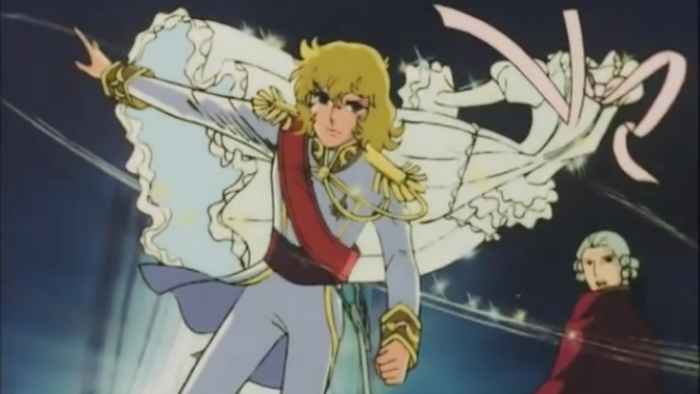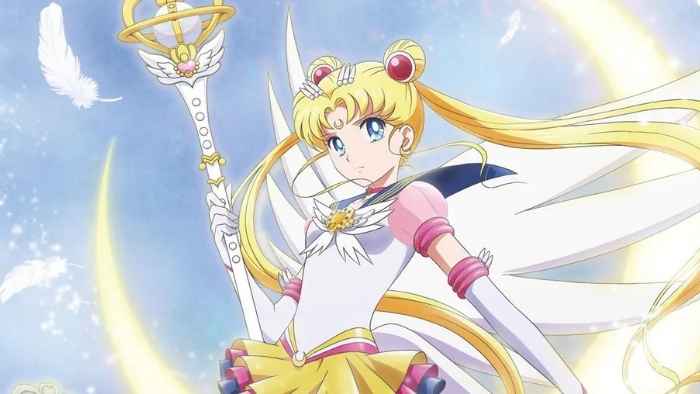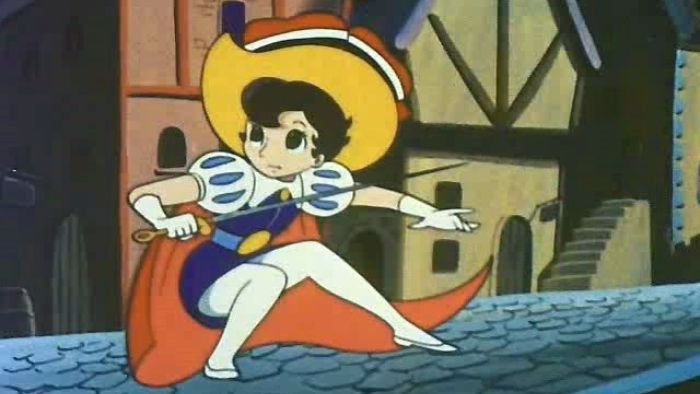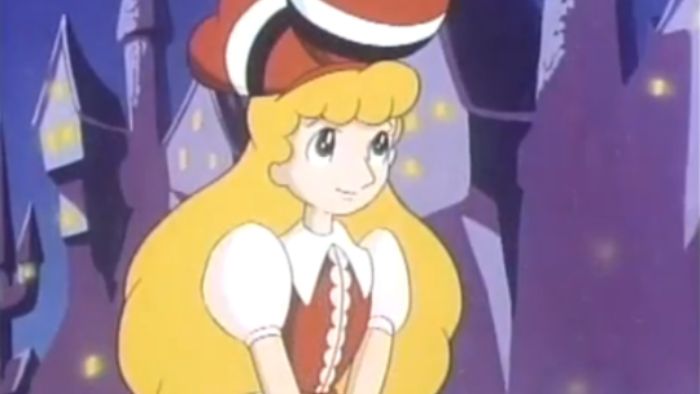
When Frozen was released, there was widespread awe. A film touting female independence, freedom, and a climax that sees the princess rescued by the selfless sacrifice of her sister. The dashing prince turned out to be the bad guy, nobody got married in the end, and the queen gained her crown and throne without a king in sight.
Revolutionary.
Except it wasn’t. Sure, it completely subverted their usual princess trope as it had never been done before. Except it had.
While the western world was churning out Manic Pixie Dream girls by the dozen, shoujo was bringing us female empowerment in anime form. Here’s how the shoujo genre has empowered generations.
Like movies with strong girls in the lead? Check out numbers 1, 2, 5, and 6 on our (ranked) list of Studio Ghibli movies.
What Is A Manic Pixie Dream Girl, Anyway?
The Manic Pixie Dream Girl is a common trope that crosses genres and pops up in just about everything. In a nutshell, these girls are supporting characters who seldom take the lead. Instead, they function as whirlwinds, blowing into the life of the actual protagonist (who is usually male, repressed, and stuck in some quandary or other) and lifting him out of himself.

They’re usually young women, stunningly beautiful, highly energetic, and full of enthusiasm for life and love. A childlike glee and playful nature, coupled with eccentricities, quirks, and (more often than not) brightly colored, wild hair, and a complete lack of inhibitions.
Think Kirsten Dunst’s Claire Colburn in Elizabethtown, the quintessential Manic Pixie Dream Girl.
Their function is to enrich the protagonist’s life. To show him the meaning of love and enable him to embrace a liberated existence. The Manic Pixie Dream Girl exists purely for the sake of the protagonist. She’s there to make him feel better, improve his life, save him.
The Magic Of Shōjo (Or Shoujo) Girls
Shōjo (or the anglicized Shoujo) is a Japanese word for ‘young girl’ or ‘young woman’ and is a genre of both manga and anime aimed at young females. While the genre often features high school romance and is frequently dismissed as nothing but googly-eyed nonsense for girls, it’s a lot deeper than that.

The genre may be aimed at teen girls and young adult women, but it’s beloved by anime fans of all ages and genders.
Some of the best anime is shoujo, from Yona of the Dawn to Vampire Knight.
The crux of the shoujo genre is a young, female protagonist who uses her gifts to save themselves, their friends, the world, or all three. Those gifts can be natural, but they are frequently supernatural, magical, or involve the acquisition of power in some form. There is a greater emphasis placed on romance and emotions than other genres.
The Empowerment Of Shoujo
The shoujo genre introduced an entire generation of Millenials to a type of female character they desperately needed. These characters continue to inspire and empower those women, and now provide Gen Z and the up-and-coming Gen Alpha with an array of powerful characters to emulate.
The Rose of Versailles
Not only does The Rose of Versailles feature a cracking female protagonist in the form of Marie Antoinette, but the character of Oscar is also beautifully created. Born a woman in a patriarchal system, Oscar was raised like a man. A soldier, a fighter, a defender, not only is Oscar fully capable of protecting herself, she’s Marie Antoinette’s proverbial knight in shining armor.

This could easily have become a tale about a woman fighting for her place in a man’s world. But it didn’t. Instead, it portrays a woman who steps into a role usually occupied by a man and simply owns it.
Dress as you will, do as you dream; gender is no longer a barrier to the life you want.
Sailor Moon
Fourteen-year-old Usagi Tsukino finds she can magically transform into Sailor Moon, a superhero with cool powers who defends the world from deadly monsters and evil villains. She teams up with a gang of Sailor Guardians, and together they vanquish foes, go on shopping sprees, agonize over their latest crushes, and wear cool makeup.

Problems arise as Usagi transforms into her superhero alter-ego, which involves hollering “Moon Prism Power, Make Up!” while her clothes magically disappear and she is left hovering, limbs akimbo, naked and silhouetted against the light of the moon. In short order, she’s clad in a short-skirted sailor outfit, makeup, nail polish, and a bedazzled tiara that doubles as a deadly weapon.
You have to remember, it was the 90s.
Is this seemingly sexualized version of adolescent empowerment? Well, yes. While there’s a questionable focus on fashion, weight concerns, and boys, and we might not like to think these are the things young girls care about, they are.
Sailor Moon portrays female characters capable of juggling all the angst and nonsense of their teens while simultaneously saving the world and prioritizing values like friendship, loyalty, and building up those around you rather than tearing them down is vital.
It’s a far cry from the Manic Pixie Dream Girls of the era, who seemingly existed for the sole purpose of making men look and feel better.
Revolutionary Girl Utena
Another shoujo giving us an empowering view of what it means to be female is Revolutionary Girl Utena. A post-modern fairytale that completely subverts the Disney Princess, Utena picks up similar themes to The Rose of Versailles, in that it explores the role of females in society.

The titular Utena is an independent, self-sufficient heroine who disregards the regular gender mores of her society and does precisely as she wishes. She does not fall into the trap of being the magical girl who saves the hero at the expense of herself. Nor does she wait demurely to be rescued, so that she might be sidelined as the trophy mate, seamlessly transitioning from shy virgin to sexual goddess to selfless mother, as is so often the case.
Princess Knight
The gender-bending potential of shoujo is well represented by the character of Sapphire in Princess Knight. The manga series (known as Ribbon no Kishi in Japanese) by Osamu Tezuka was originally published in 1967 by Kodansha, a shojo publishing company squarely aiming their products at nine to thirteen-year-olds.
Princess Knight follows a girl born with two souls, one a boy, the other a girl. Because she is born into royalty, Sapphire’s only means of inheriting the throne is to masquerade as a prince while secretly living as a princess. Sapphire faces many issues as she tries to ensure her dreams of fulfilling her birthright come true, not least of which is another prince from a nearby kingdom falling hopelessly in love with Sapphire the Princess while remaining ignorant of her duel soul and fervently disliking Sapphire the Prince.

Along the way, there are the predictable antagonists who true to assassinate her and reveal her secrets. Duke Duralumin and Sir Nylon are bent on the former’s son taking the throne instead of Sapphire. The complexity of the plot is quite something, despite the seeming cliche setup. And Angel named Tink is struggling to retrieve Sapphire’s male heart so that he may go to heaven, while a Devil Witch is determined to wed her daughter off to Prince Franz and tries to steal Sapphire’s other heart to aid in the process.
Despite the binary view of gender presented by the male/female souls and personalities of the main character, there’s a surprising amount of nuance to the tale. At the same time, traditional manga graphics portray characters with exaggerated and unattainable ideals of beauty, usually starkly contrasted by realistic scenery.
Graphic Depictions Of Gender
The distinctive features of shoujo characters are visually recognizable – and gendered – in an instant. This is specifically done to ensure characters do not appear to be androgynous. It’s particularly obvious for female characters, who flaunt highly exaggerated, doll-like features, huge eyes with exceptionally long and curly lashes, slim legs, slender waists, moderate bosoms, and long, shiny locks of voluminous hair (usually in imaginative colors). While the specific body shapes have changed over time to conform to the current societal ideals, they always remain a little too far from reality.

Princess Knight pioneered a different way of representing gender in manga and anime, with a biologically female character who is visually represented as a boy for much of the time. While depicted as a boy, Sapphire lacks all the elements described above, from the lashes to the boobs. As a female, Sapphire has the customary blonde tresses and a petite frame, as a male, however, ‘she’ is shown with a cropped, curling, tomboy cut. Crucially, the illustration style of the manga – not only of the characters themselves but also the background – is different to traditional manga.
Gone is the realism found in the scenery and supporting characters. Gone is the contrast that highlights the attempted perfection of the main character. Instead, we can view both versions of Sapphire on an even footing and effortlessly recognize the character as one and the same person regardless of which ‘soul’ they are currently portraying.
Liberating Shoujo
We see considerably more liberated and independent women in fiction these days. Still, shoujo paved the way for much of it and pre-empted many of the current trends in portraying female characters.
Looking for more 90s gems? Check out our top picks from the decade of Girl Power.












